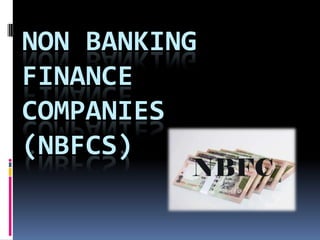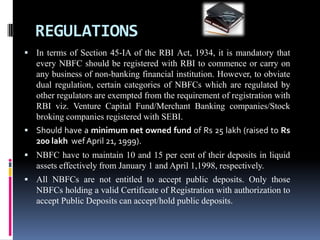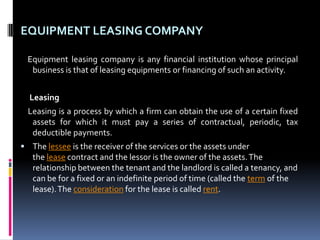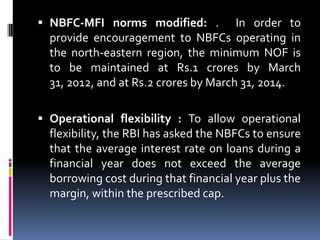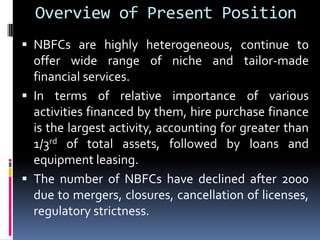Non-banking financial companies (NBFCs) are financial institutions that provide banking services without meeting the legal definition of a bank. This document provides an overview of NBFCs in India, including their history, regulations, types, and roles. It defines various types of NBFCs such as investment companies, equipment leasing companies, loan companies, and housing finance companies. It also discusses the historical committees that shaped NBFC regulations and compares NBFCs to banks.
